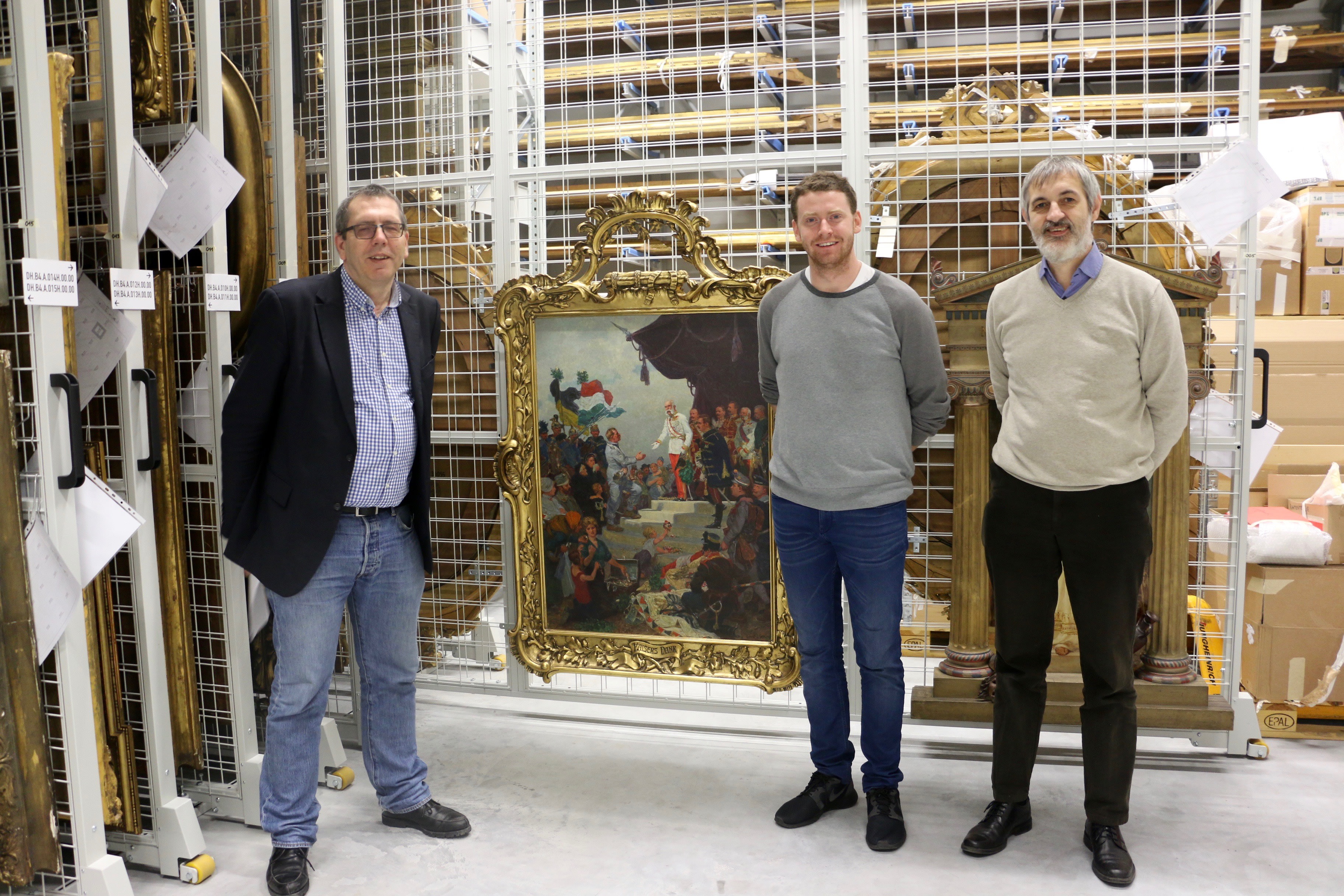The Klinkhoff Case at the Wien Museum
"Theft", a joint exhibition by the Jewish Museum Vienna and the Wien Museum (Vienna Museum), explores the looting of property by the Nazis, tracing stolen objects from their theft, to museum vaults and their eventual restitution. The exhibition marks twenty-five years of provenance research in the City of Vienna collections. “Theft” is of particular interest to us because it features a painting the Gestapo seized from our family. The circumstances surrounding our connection to the painting, its rediscovery, restitution and donation to the Vienna Museum are publicized for the first time in this exhibition and accompanying catalogue.

My great-grandfather Johann (Hans) Klinkhoff was a technician in the Imperial and Royal War Navy during World War I and was stationed in Pula (now Croatia), the main port on the Istrian Peninsula in the Adriatic Sea. During his time there, he befriended Ludwig Koch, a genre painter commissioned to paint patriotic paintings of the Emperor Franz-Josef.
The painting "Kaiser Dank" or "Emperor's Gratitude" depicts the Emperor shaking hands with a wounded soldier ascending the steps towards him. Dissatisfied with the composition, Koch asked Hans Klinkhoff to model for a figure in the painting. He is the third figure to the right of the Emperor. Hans later acquired the original painting from Koch, which was reproduced extensively and used as postcards distributed throughout the Empire.
The global economic crisis caused financial turmoil for Hans’ company. In an effort to save his business, he sought loans from various non-Aryan business partners and banks. In 1938, the Gestapo raided his home, confiscated his belongings, and arrested him. After being interrogated and imprisoned for several days, he was released and fled to Milan. From there, he attempted, unsuccessfully, to salvage his company. His assets were eventually seized or liquidated. Research by the Vienna Museum team revealed that on August 25, 1941, the Vienna Museum acquired "Kaiser Dank" from “assets seized by the Gestapo."
My grandfather, Walter Klinkhoff, Hans eldest son, was an engineer. He immigrated to Montreal in 1949 where he established our family's original art gallery. In a video memoir recorded in the early 1990s, Walter recounted his early years in Austria and his life in Canada. In the video, he also described in vivid detail a painting hanging in his childhood home. The painting, he explained, played a significant role in his father's life. Walter Klinkhoff passed away in 1997.
In 2008, my grandmother Gertrude, Aunt Alice and her husband Drew, discovered a painting by Ludwig Koch in the art database of the National Fund of the Republic of Austria for the Victims of National Socialism matching my grandfather's description.
They alerted the museum and shared my grandfather's video interview recorded more than a decade prior. This initiated a long journey to recover not only the painting but the true story of our family with the assistance of the research team at the Vienna Museum.
After visiting the painting in 2008, my grandmother Gertrude wrote "I really was not quite sure what to expect. After all, it had evidently been confiscated by the Nazis. I was really overwhelmed at the sight of it. It was in perfect condition, with vibrant colours and in my opinion wonderfully well painted. Even the massive beautiful frame did not seem to have a scratch on it."
On March 24, 2009, the Vienna Restitution Commission unanimously decided that "Emperor's Gratitude" should be restituted to Hans Klinkhoff's legal successors, who then donated it to the Vienna Museum. The fate of the other artworks from the Klinkhoff family collection remain unknown.

In 2016, I visited the painting with researcher and curator Dr. Milchram Gerhard, and historian Dr. Michael Wladika. In addition to confirming our claim of ownership, the museum team conducted extensive research on our family history, uncovering details previously unknown to us. Visually, the painting is striking and beautifully rendered. It is adorned with a massive, ornate, gold-coloured frame. The entire experience was profound. I immediately understood why this work left a lasting impression on my grandfather, to the extent that he reminisced about it nearly 60 years after he last saw it. I wonder if it influenced his decision to open an art gallery, and start the family tradition we continue today.
Our family extends sincere thanks to Dr. Milchram Gerhard, Michael Palmer, Dr. Michael Wladika and the team at the Wien Museum.
"Theft" is on view at both the Jewish Museum Vienna and Wien Museum from June 6 - October 27, 2024. (Link). This report contains details translated from the original version written and published in German by the Vienna Museum.
Comments
You must be so gratified to have this painting returned. The story of its life is truly fascinating.
To be able to donate it to the museum will ensure its security and allow it to be displayed
to the public who can then feel some level of retribution regarding the issue of its original theft from your family. The history of this painting is one of importance for many families in the past who suffered similarly and also for those of us who continue to be upset by the actions of those times.



